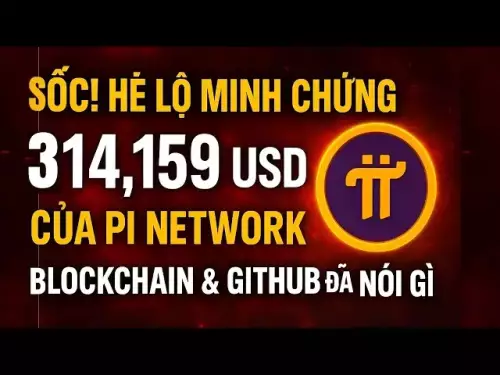-
 bitcoin
bitcoin $109547.008142 USD
0.04% -
 ethereum
ethereum $4011.838726 USD
-0.05% -
 tether
tether $1.000402 USD
-0.01% -
 xrp
xrp $2.798606 USD
0.88% -
 bnb
bnb $970.877944 USD
1.39% -
 solana
solana $202.237275 USD
-0.95% -
 usd-coin
usd-coin $0.999673 USD
0.00% -
 dogecoin
dogecoin $0.229294 USD
-1.15% -
 tron
tron $0.336370 USD
-0.45% -
 cardano
cardano $0.777260 USD
-1.66% -
 hyperliquid
hyperliquid $45.503019 USD
1.73% -
 ethena-usde
ethena-usde $1.000362 USD
0.01% -
 chainlink
chainlink $20.785303 USD
-1.10% -
 avalanche
avalanche $28.755822 USD
-0.11% -
 stellar
stellar $0.358303 USD
-0.48%
How do I calculate unrealized profit and loss in futures contracts?
Unrealized P&L in crypto futures reflects the floating profit or loss on open positions, changing with market prices until the trade is closed.
Sep 18, 2025 at 03:00 am

Understanding Unrealized P&L in Crypto Futures
Unrealized profit and loss (P&L) in futures trading refers to the gains or losses on open positions that have not yet been closed. These values fluctuate with market price changes and are only realized when the position is settled. In the fast-moving crypto derivatives market, tracking unrealized P&L helps traders assess risk exposure and make informed decisions.
Key Components of Unrealized P&L Calculation
1. Position Size and Entry Price – The foundation of any P&L calculation lies in knowing how much you’ve committed and at what price.2. Current Market Price – This dynamic value determines whether your open position is in profit or loss based on real-time data.
3. Leverage and Contract Multiplier – Futures contracts often use multipliers; for example, BTC perpetuals on major exchanges represent a specific dollar amount per contract.
4. Direction of Trade – Long positions gain value when prices rise, while short positions benefit from price declines.
5. Funding Rates – In perpetual futures, periodic funding payments can influence unrealized returns, especially over extended holding periods.
Calculation Methods for Different Positions
1. Long Position Formula – (Current Price – Entry Price) × Number of Contracts × Contract Multiplier.2. Short Position Formula – (Entry Price – Current Price) × Number of Contracts × Contract Multiplier.
3. For Inverse Futures – Profits and losses are denominated in the base asset (e.g., BTC), requiring conversion to USD using the current spot rate for accurate valuation.
4. Linear Futures – Payouts are in stablecoins like USDT, making calculations more straightforward as each contract has a fixed USD value.
5. Cross-Margin vs Isolated Margin – While margin mode doesn’t change the P&L formula, it affects liquidation thresholds and available buffer against adverse moves.
Risks Associated with Unrealized Gains
1. Volatility Swings – Cryptocurrency markets can reverse sharply, turning large paper profits into losses within minutes.2. Liquidation Risk – If unrealized losses erode available margin below maintenance levels, exchanges automatically close positions at a loss.
3. Overconfidence Bias – Traders may hold winning positions too long, assuming unrealized gains will remain intact, ignoring exit strategies.
4. Funding Cost Accumulation – In prolonged trades, especially in contango markets, recurring funding fees can eat into unrealized profits.
5. Slippage During Exit – High volatility can result in execution prices worse than expected, reducing actual realized gains compared to unrealized figures.
Frequently Asked Questions
What is the difference between realized and unrealized P&L?Realized P&L occurs after closing a position, locking in gains or losses. Unrealized P&L reflects the theoretical value of open trades based on current pricing.
Can unrealized P&L be negative?Yes. When the market moves against an open position, unrealized losses appear. These show potential losses if the position were closed at that moment.
Do funding payments affect unrealized P&L?Funding rates do not directly alter the mark-to-market P&L but reduce account equity over time for paying sides, indirectly impacting net profitability.
How often is unrealized P&L updated?Exchanges update unrealized P&L in real-time or near real-time using the latest mark price, ensuring traders see accurate valuations aligned with current market conditions.
Disclaimer:info@kdj.com
The information provided is not trading advice. kdj.com does not assume any responsibility for any investments made based on the information provided in this article. Cryptocurrencies are highly volatile and it is highly recommended that you invest with caution after thorough research!
If you believe that the content used on this website infringes your copyright, please contact us immediately (info@kdj.com) and we will delete it promptly.
- Ethereum, Bitcoin Dominance, and the Altcoin Rally: A New York Minute on Crypto
- 2025-09-28 12:25:15
- RLUSD, XRP, and Open Interest: Decoding the Dynamics
- 2025-09-28 12:25:15
- Crypto Meme Coins: Unveiling the 2025 Potential
- 2025-09-28 12:25:16
- Crypto's Comeback: Solana, Polygon, and the Hunt for the Next Moonshot
- 2025-09-28 12:25:16
- Stablecoins, Financial Transactions, and the Future World: A New York State of Mind
- 2025-09-28 12:30:12
- XRP, Competitor, PDP Climb: Decoding the Crypto Landscape in 2025
- 2025-09-28 12:30:12
Related knowledge

How do I enable the "scalping-only" mode for Cardano (ADA) contracts?
Sep 24,2025 at 03:19am
Understanding Scalping Strategies in Crypto Derivatives1. Scalping in cryptocurrency trading refers to executing multiple short-term trades within min...

What is the settlement time for Cardano (ADA) contracts?
Sep 28,2025 at 04:18am
Understanding Cardano's Contract Settlement Mechanism1. Cardano operates on a proof-of-stake consensus model known as Ouroboros, which fundamentally i...

How do I add margin to Cardano (ADA) contracts?
Sep 27,2025 at 07:54pm
Understanding Margin in Cardano (ADA) Smart ContractsCardano operates on a proof-of-stake blockchain that supports smart contracts through its Plutus ...

What is the maximum position limit for Cardano (ADA) contracts?
Sep 23,2025 at 11:00pm
Understanding ADA Futures and Derivatives Market Structure1. Cardano (ADA) futures contracts are offered by several major cryptocurrency derivatives e...

What is the maker fee for Cardano (ADA) contracts?
Sep 26,2025 at 09:01am
Understanding Maker Fees in Cardano (ADA) Contracts1. The concept of maker fees applies broadly across decentralized exchanges and smart contract plat...

How can I view open interest in Cardano (ADA) contracts?
Sep 24,2025 at 07:36am
Understanding Open Interest in Cardano Derivatives1. Open interest refers to the total number of outstanding derivative contracts, such as futures or ...

How do I enable the "scalping-only" mode for Cardano (ADA) contracts?
Sep 24,2025 at 03:19am
Understanding Scalping Strategies in Crypto Derivatives1. Scalping in cryptocurrency trading refers to executing multiple short-term trades within min...

What is the settlement time for Cardano (ADA) contracts?
Sep 28,2025 at 04:18am
Understanding Cardano's Contract Settlement Mechanism1. Cardano operates on a proof-of-stake consensus model known as Ouroboros, which fundamentally i...

How do I add margin to Cardano (ADA) contracts?
Sep 27,2025 at 07:54pm
Understanding Margin in Cardano (ADA) Smart ContractsCardano operates on a proof-of-stake blockchain that supports smart contracts through its Plutus ...

What is the maximum position limit for Cardano (ADA) contracts?
Sep 23,2025 at 11:00pm
Understanding ADA Futures and Derivatives Market Structure1. Cardano (ADA) futures contracts are offered by several major cryptocurrency derivatives e...

What is the maker fee for Cardano (ADA) contracts?
Sep 26,2025 at 09:01am
Understanding Maker Fees in Cardano (ADA) Contracts1. The concept of maker fees applies broadly across decentralized exchanges and smart contract plat...

How can I view open interest in Cardano (ADA) contracts?
Sep 24,2025 at 07:36am
Understanding Open Interest in Cardano Derivatives1. Open interest refers to the total number of outstanding derivative contracts, such as futures or ...
See all articles










































































